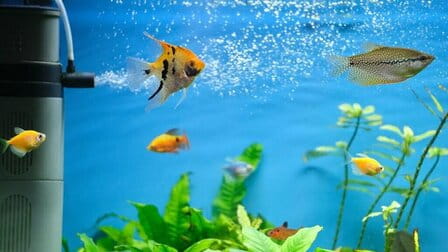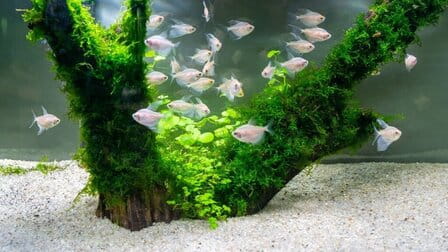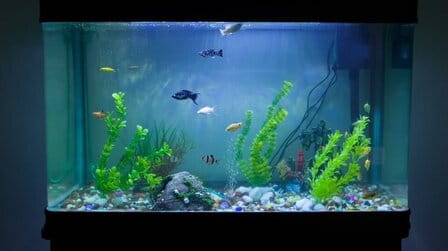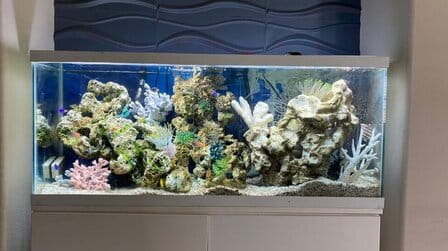An aquarium can be a captivating oasis of tranquility and natural beauty, offering a glimpse into the aquatic world. However, the presence of unwanted snails can quickly disrupt this serenity. Snails in an aquarium can multiply rapidly, causing aesthetic concerns and potentially harming your fish and plants. In this comprehensive guide, we'll explore in detail how to prevent snails from invading your aquarium, or if they're already present, how to manage their population effectively. Whether you're a novice or experienced aquarist, creating a snail-free sanctuary is essential for maintaining a thriving aquatic environment.
The Significance of Preventing Snails in Your Aquarium
Understanding why snails are considered unwelcome guests in aquariums is crucial:
1. Rapid Reproduction:
Snails reproduce prolifically, and even a few individuals can quickly turn into an overwhelming population. This overpopulation can lead to overcrowding and competition for resources among your fish and other aquatic life.
2. Aesthetic Concerns:
While some aquarists appreciate the unique appearance of snails, others find them unattractive. Snails can detract from the visual appeal of your aquarium, particularly if they multiply uncontrollably.
3. Plant Predation:
Certain snail species, such as the common pond snail, feed on live aquarium plants. Their herbivorous tendencies can result in damaged and decaying plants, negatively impacting the overall health and aesthetics of your aquatic flora.
4. Algae Overgrowth:
Snails can contribute to excessive algae growth in your tank. While some algae is beneficial, an overabundance can be unsightly and detrimental to water quality.

Comprehensive Strategies to Prevent Snails in Your Aquarium
Let's delve into a range of effective strategies and preventive measures to ensure your aquarium remains snail-free or to manage their population if they've already infiltrated your aquatic haven.

1. Rigorous Inspection of New Additions:
Before introducing new plants, decorations, or fish to your aquarium, conduct a meticulous inspection to detect any snails or their eggs. Remove any snails you encounter before adding these items to your tank.
2. Quarantine New Fish:
Prior to introducing new fish to your main aquarium, establish a quarantine tank. This separate space allows you to observe and treat new fish for any snail infestations before they can spread to your main tank.
3. Prudent Feeding Habits:
Overfeeding your fish can lead to uneaten food settling at the tank's bottom, creating an enticing food source for snails. Feed your fish an amount they can consume in a few minutes to minimize excess food reaching the substrate.

4. Consider Snail-Eating Fish:
Explore the possibility of adding fish species that naturally prey on snails to your aquarium. Some popular choices include loaches, pufferfish, and certain cichlids. However, exercise caution when selecting snail-eating fish, as compatibility with your existing tank inhabitants is vital.
5. Manual Snail Removal:
If you detect snails in your aquarium, embark on a regular regimen of manual removal. While this method may not eliminate all snails, it can significantly help control their population.

6. Harness the Power of Snail Traps:
Commercial snail traps are available and can be remarkably effective in capturing snails within your aquarium. These traps typically utilize bait to attract snails, which then become confined within the trap.
7. Explore Chemical Treatments:
There are chemical treatments on the market designed to eradicate snails from your tank. However, exercise caution when employing chemicals, as they have the potential to harm other tank inhabitants and disrupt the delicate ecological balance of your aquarium.

8. Copper-Based Medications:
Copper-based medications can be a potent remedy for snail infestations. However, it's essential to note that copper can be toxic to certain fish and invertebrates, so exercise great care when using it and closely monitor your tank's condition.
9. Introduce Biological Controls:
Certain aquatic animals, such as assassin snails, have a natural predilection for feeding on other snail species. Introducing these natural predators to your aquarium can aid in effectively managing snail populations.
Efforts to prevent snails in your aquarium or manage their population require diligence, patience, and a holistic approach. Recognize that maintaining a healthy and balanced aquarium is paramount to deterring snail infestations. Regular water changes, appropriate filtration, and vigilant monitoring of water parameters can create an environment that is less hospitable to snail proliferation.
The Role of Water Parameters
One often-overlooked aspect of snail prevention is maintaining specific water parameters that are less conducive to their reproduction. Here are some key parameters to consider:
1. Temperature:
Snails tend to thrive in warmer water. If your aquarium houses species that prefer cooler temperatures, keeping the water slightly cooler can discourage snail reproduction.
2. pH Level:
Snails often prefer slightly alkaline water conditions. Monitoring and adjusting the pH level to be slightly acidic can make the environment less favorable for snails.
3. Hardness:
Snails typically thrive in softer water. Adjusting the water hardness to be slightly harder can deter snail reproduction.
Conclusion
By following these comprehensive strategies and taking proactive measures, you can cultivate and maintain a snail-free aquarium that showcases your aquatic life and plants in their full splendor. With dedication and the right preventative steps, you can enjoy a thriving aquatic ecosystem that brings tranquility and natural beauty to your space.













